If you’ve ever felt like your stomach is at war with your food choices, you’re not alone. Studies show 74% of Americans experience digestive discomfort weekly.
The gut microbiome crisis is getting worse. Your digestive health suffers while you unknowingly eat foods that trigger bloating and inflammation. Many so-called “healthy” options actually damage your gut bacteria.
But gastroenterologists have identified specific probiotic rich foods that heal your digestive system naturally. These expert-backed solutions work where other approaches fail.
You’ll discover seven scientifically proven foods that restore your gut health, plus three common culprits secretly causing your bloating. No more guessing games with your digestive wellness.
🚨 3 “Healthy” Foods That Actually Cause Bloating
These popular foods might be sabotaging your digestive health
Look for: Less than 6g added sugar per serving
Look for: “Raw” or “unpasteurized” labels
Look for: Minimal ingredients, refrigerated storage
⏱️ Your Gut Healing Timeline
What to expect when switching to gut-friendly foods
Initial Adjustment
Start with 1 tablespoon fermented foods daily. Some temporary gas is normal as bacteria rebalance.
First Improvements
Notice less bloating and more regular bowel movements. Increase to 1/4 cup fermented foods.
Significant Progress
Better energy levels, fewer food cravings. Work up to 1/2 cup fermented foods daily.
Optimal Gut Health
Stable digestion, improved immunity. If bloating persists, consult a healthcare professional.
🕐 Perfect Daily Probiotic Schedule
When and how to eat gut-healing foods throughout your day
Probiotics + prebiotics + antioxidants
Live cultures + vegetable fiber
Multiple bacterial strains
Start with 1 tbsp, increase gradually
🥒 Real vs Fake Fermented Foods
How to spot the difference between helpful and harmful options
- Shelf-stable storage
- Says “pasteurized” on label
- Clear liquid, no cloudiness
- No live cultures mentioned
- Cheaper price point
- Long expiration dates
- Found in regular aisles
- Requires refrigeration
- Says “raw” or “unpasteurized”
- Cloudy liquid, active bubbles
- “Contains live cultures” label
- Higher price for quality
- Shorter shelf life
- Found in refrigerated section
📊 Gut Health by the Numbers
Important facts about digestive health and probiotics
Your gut feels off. Bloating after meals. Weird digestive issues. Low energy that won’t go away. You’ve tried everything, but nothing seems to work.
Here’s what most people don’t know: your gut houses 70% of your immune system. When your gut bacteria get out of balance, your whole body suffers. The good news? You can fix this with the right foods.
These seven probiotic-rich foods contain live bacteria that rebuild your gut health from the inside out. Each one works differently, but they all do the same thing: they flood your system with good bacteria that crowd out the bad stuff.
You don’t need expensive supplements or complicated protocols. Just add these foods to what you already eat. Your gut will start feeling better in days, not months.
Kefir: The Probiotic Powerhouse
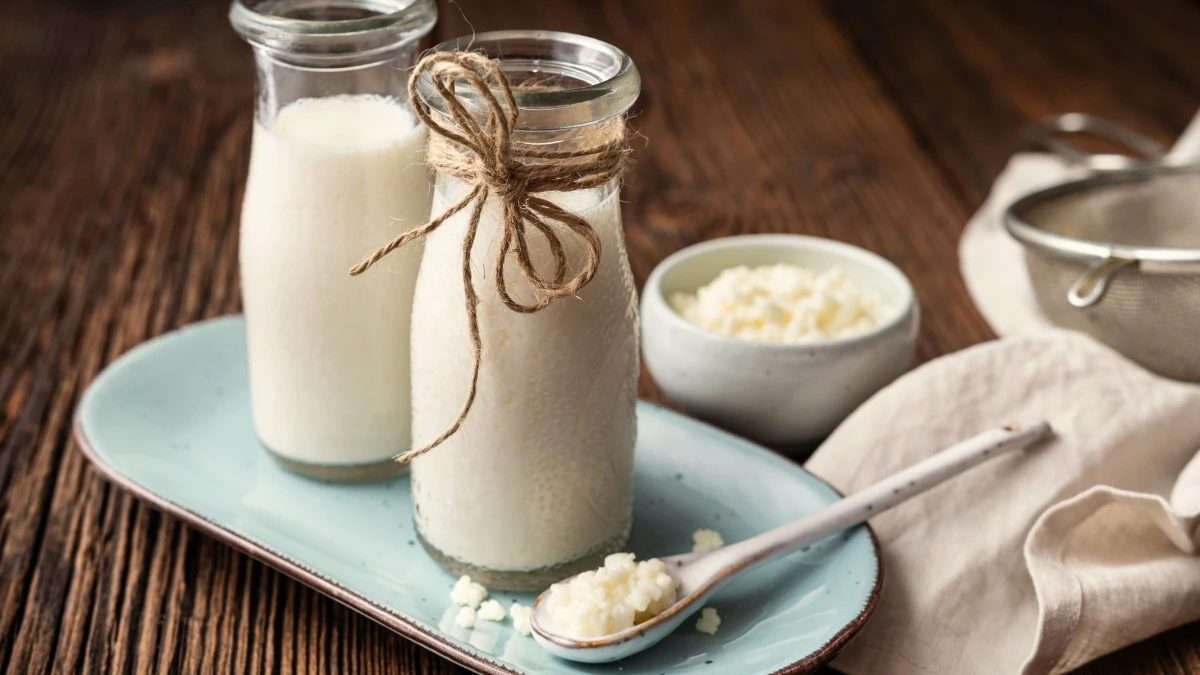
Kefir packs more probiotic punch than any other food. While yogurt might have 2-3 bacterial strains, kefir contains over 12 different types of beneficial bacteria and yeasts.
Think of kefir as yogurt’s stronger cousin. It contains 10 times more colony-forming units (CFUs) than regular yogurt. That means more good bacteria reaching your gut alive.
The best part? Kefir breaks down lactose during fermentation. Even if dairy usually bothers you, kefir might not. The bacteria eat up most of the lactose, leaving behind a gut-friendly drink.
When shopping for kefir, look for brands with no added sugar. The ingredient list should be short: milk and kefir grains. Avoid anything with artificial flavors or stabilizers.
Start with half a cup per day. Drink it plain, blend it into smoothies, or use it in place of milk in cereal. Your gut bacteria will multiply fast, but too much too soon can cause temporary bloating.
Water kefir works great if you want to avoid dairy completely. It has fewer strains than milk kefir but still delivers solid probiotic benefits.
Sauerkraut: Ancient Gut Medicine
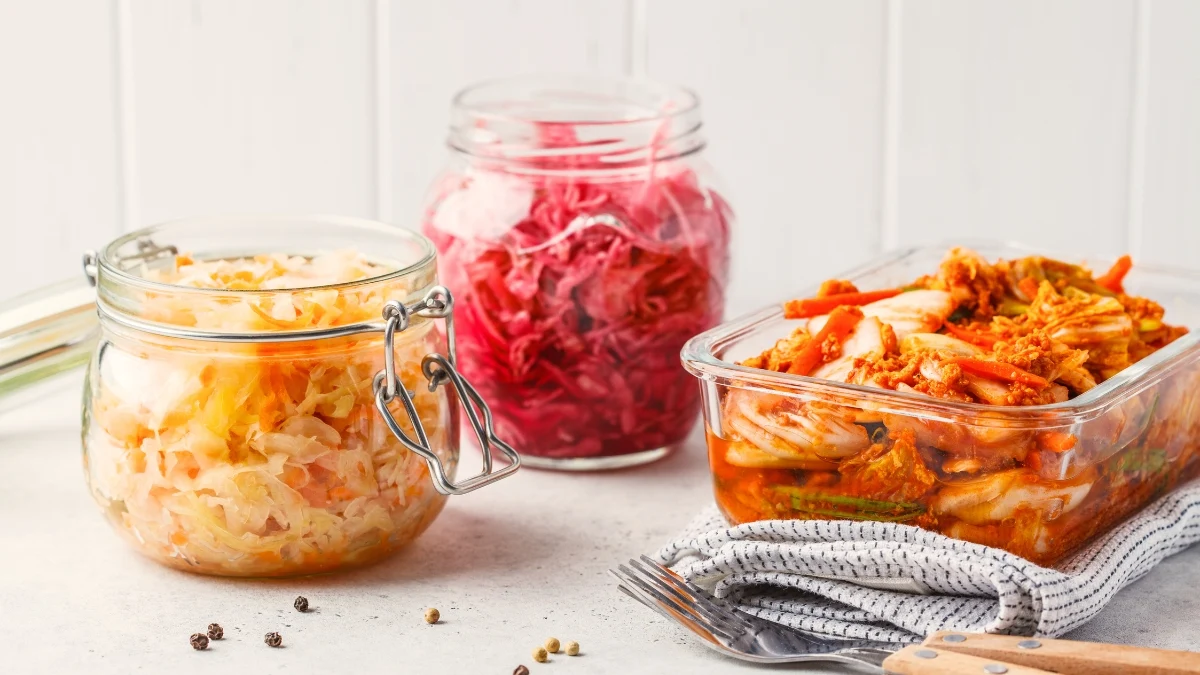
Raw sauerkraut contains Lactobacillus plantarum, a bacterial strain that acts like a bodyguard for your intestinal wall. This bacteria creates a protective barrier that keeps toxins out of your bloodstream.
Here’s the catch: pasteurized sauerkraut won’t help you. Heat kills all the beneficial bacteria. You need the raw, refrigerated kind that’s still alive and bubbling.
Sauerkraut also delivers vitamin C. Just half a cup gives you 35% of your daily needs. This combo of probiotics and vitamin C supercharges your immune system.
Making your own sauerkraut takes just cabbage, salt, and time. Shred cabbage, massage with salt until it releases liquid, then pack it in a jar. Leave it on your counter for 3-7 days until it tastes sour.
Store-bought works too. Look for brands in the refrigerated section with simple ingredients: cabbage, salt, maybe some spices. Bubbies and Farmhouse Culture make good options.
Add sauerkraut to sandwiches, eggs, or eat it straight from the jar. Start with a forkful per day. Too much fiber too fast can cause gas until your system adjusts.
Kimchi: Korean Gut Healer
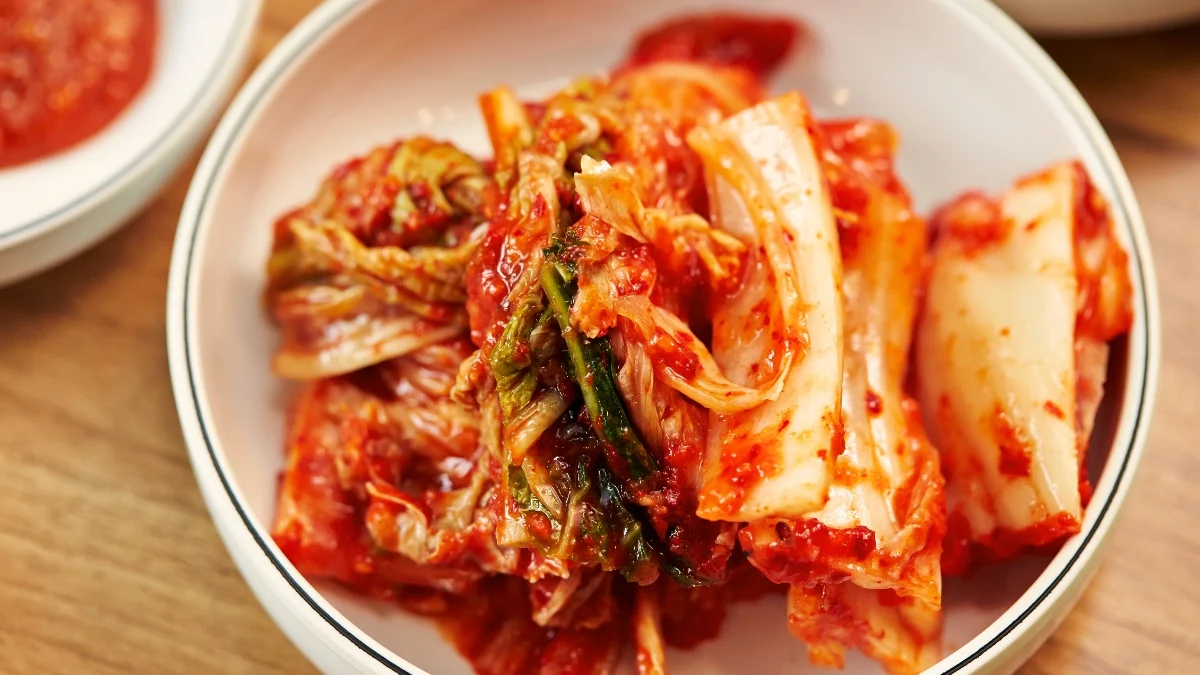
Kimchi fermentation creates unique bacterial strains you won’t find anywhere else. Korean researchers have identified over 970 different types of beneficial bacteria in traditional kimchi.
The spicy kick comes from gochugaru (Korean red pepper flakes). These peppers contain capsaicin, which speeds up digestion and reduces inflammation in your gut lining.
Authentic kimchi uses fish sauce or shrimp paste during fermentation. These add extra nutrients and create a more complex bacterial environment. Vegan versions work too, but traditional kimchi offers more gut benefits.
The fermentation process breaks down the vegetables, making nutrients easier to absorb. Your body gets more vitamins and minerals from fermented cabbage than fresh cabbage.
Look for kimchi that’s still crunchy, not mushy. Good kimchi should smell sour and funky, not rotten. Avoid versions with vinegar listed as an ingredient – that usually means it wasn’t properly fermented.
Start small with kimchi. A tablespoon per day lets your taste buds and gut bacteria adjust. Add it to rice, eggs, or eat it as a side dish. Some people mix it into soup after cooking to preserve the live bacteria.
Greek Yogurt: The Accessible Option
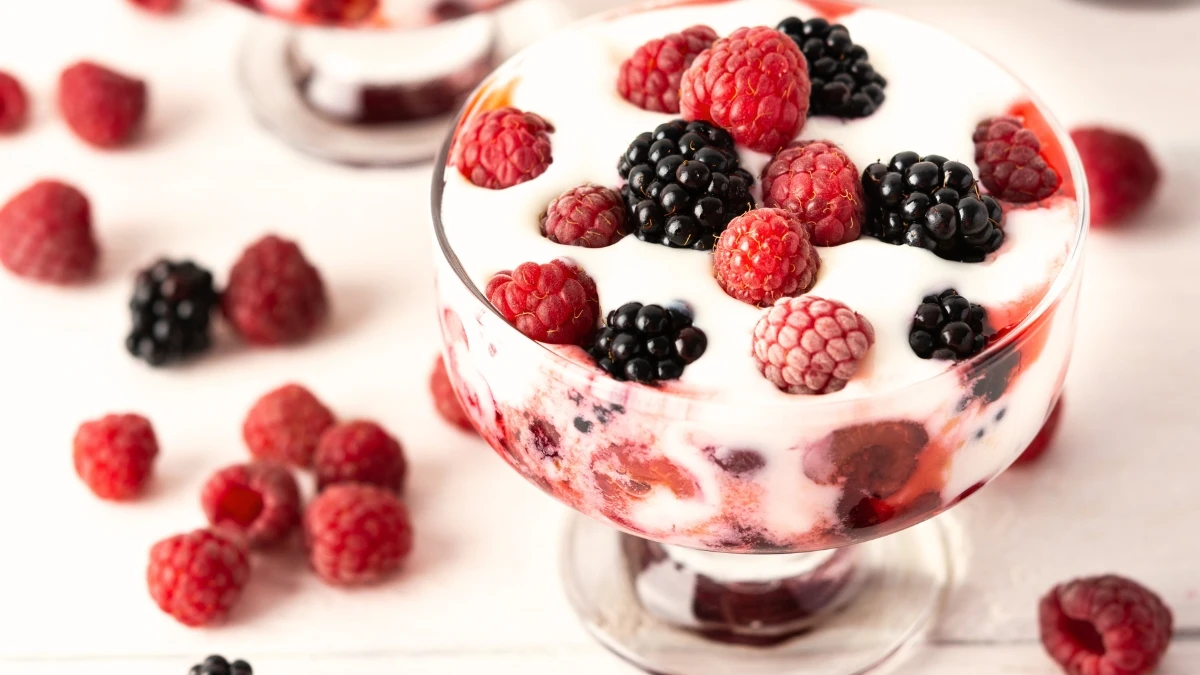
Greek yogurt strains out whey, concentrating both protein and probiotics. You get twice the protein of regular yogurt plus beneficial bacteria like Lactobacillus bulgaricus and Streptococcus thermophilus.
The protein-probiotic combo works better than either alone. Protein feeds your beneficial bacteria while probiotics improve protein absorption. Your gut gets stronger and your muscles get more building blocks.
Reading labels matters with yogurt. Look for “live and active cultures” on the package. Avoid anything with artificial sweeteners – they can kill beneficial bacteria in your gut.
Plain Greek yogurt works best. Flavored versions often contain 15-20 grams of added sugar per serving. That sugar feeds harmful bacteria and cancels out probiotic benefits.
Eat yogurt between meals or with foods that contain prebiotics like bananas or berries. The prebiotics act as food for the beneficial bacteria, helping them survive stomach acid and multiply in your gut.
Two Fage or Chobani containers per day provides enough probiotics to make a difference. Mix in honey, nuts, or fruit to make it taste better without killing the beneficial bacteria.
Miso: Umami Meets Gut Health

Miso fermentation uses Aspergillus oryzae, a beneficial mold that creates enzymes your body can’t make on its own. These enzymes help break down proteins and make nutrients more available.
Traditional miso ferments for months or even years. Longer fermentation creates more beneficial compounds and deeper flavors. The bacteria have time to multiply and create protective substances for your gut.
Watch your sodium intake with miso. One tablespoon contains about 600mg of sodium – roughly 25% of your daily limit. Use miso as a flavoring agent, not a main dish.
White miso ferments for shorter periods and tastes milder. Red miso ferments longer and has a stronger flavor. Both offer probiotic benefits, but red miso contains more beneficial compounds.
Traditional Japanese miso beats mass-produced versions. Look for brands that list soybeans, rice or barley, salt, and koji as the only ingredients. Avoid miso with preservatives or artificial additives.
Add miso to soups after cooking to preserve live bacteria. High heat kills probiotics, so stir it in at the end. You can also use miso in salad dressings or marinades for uncooked foods.
Kombucha: Fizzy Gut Medicine

Kombucha’s SCOBY (symbiotic culture of bacteria and yeast) creates a unique probiotic environment. The bacteria and yeast work together, creating compounds that single-strain probiotics can’t produce.
Good kombucha should contain less than 4 grams of sugar per serving. During fermentation, bacteria eat most of the sugar, leaving behind beneficial acids. High sugar content means incomplete fermentation.
Check alcohol content if you’re avoiding alcohol. Properly fermented kombucha contains less than 0.5% alcohol, but some brands test higher. Home-brewed kombucha can reach 2-3% alcohol if over-fermented.
Look for cloudy kombucha with visible particles floating around. This shows active fermentation and live cultures. Crystal-clear kombucha has usually been filtered and pasteurized, killing beneficial bacteria.
GT’s, Health-Ade, and Brew Dr. make quality commercial kombucha. Avoid brands with artificial flavors or added probiotics – good kombucha creates its own beneficial bacteria during fermentation.
Drink kombucha between meals on an empty stomach. This gives bacteria the best chance to reach your gut alive. Start with 4 ounces per day to avoid digestive upset from too much acidity.
Tempeh: Plant-Based Probiotic Protein
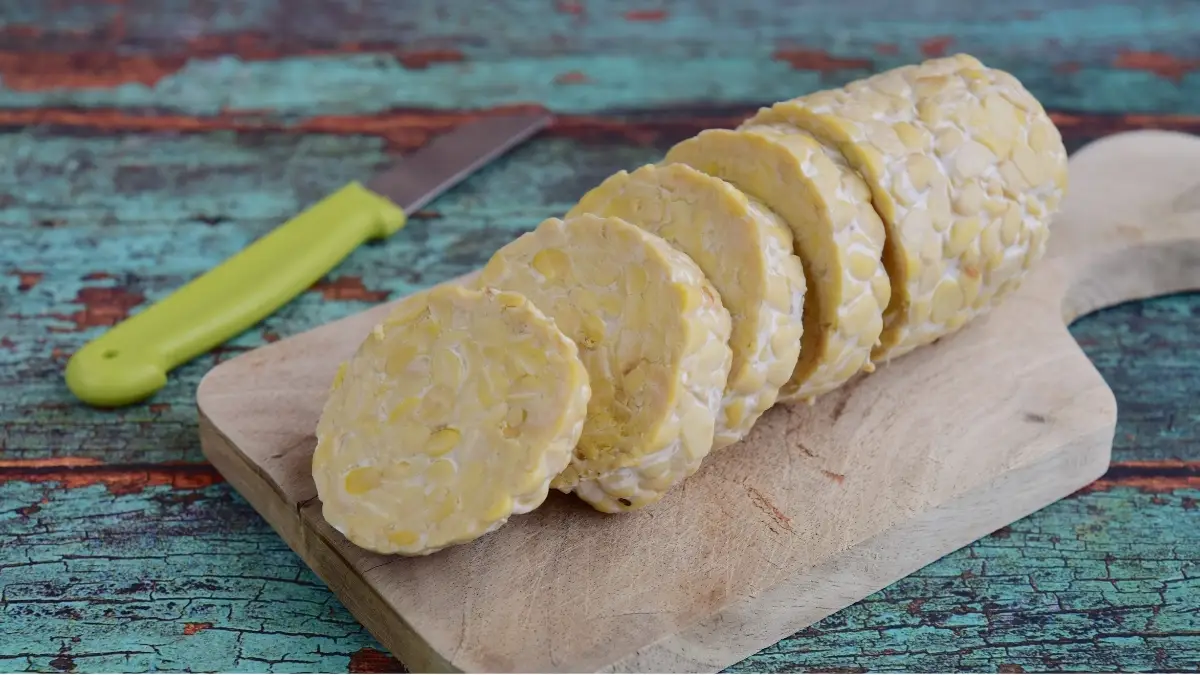
Tempeh fermentation uses Rhizopus oligosporus, a beneficial fungus that binds soybeans into a firm cake. This process creates a complete protein while adding gut-healthy microorganisms.
The fermentation breaks down compounds that make soybeans hard to digest. People who can’t handle tofu or regular soy often tolerate tempeh perfectly. Your stomach doesn’t have to work as hard to break it down.
Tempeh contains all nine essential amino acids your body needs. This makes it a complete protein source comparable to meat or eggs. The probiotics help your body absorb these amino acids more efficiently.
Fresh tempeh should smell nutty and mushroom-like, not sour or ammonia-scented. White fuzz growing on the surface is normal – that’s the beneficial mold doing its job. Black spots mean over-fermentation, but it’s still safe to eat.
Steam, sauté, or bake tempeh to make it more digestible. Unlike other fermented foods, tempeh benefits from cooking. Heat makes the protein more available while preserving some beneficial compounds.
Lightlife and Tofurky make widely available tempeh. Local health food stores often carry fresh, locally-made versions that taste better than packaged varieties. Start with 3-4 ounces per serving, about the size of a deck of cards.
Your Gut Transformation Starts Now
Your gut bacteria change within 24 hours of eating fermented foods. Add one new probiotic food this week. Notice how you feel. Add another next week.
Don’t try to eat all seven foods at once. Your gut needs time to adjust to new bacterial strains. Too much too fast causes bloating and digestive upset.
Mix and match these foods based on your taste preferences and dietary needs. Dairy-free? Focus on kimchi, sauerkraut, and tempeh. Want convenience? Greek yogurt and kombucha require zero preparation.
The bacteria in these foods don’t just improve digestion. They boost immunity, improve mood, and increase energy levels. Your gut talks to your brain through the vagus nerve. Better gut bacteria means better mental clarity and emotional balance.
Start small, stay consistent, and give your gut the good bacteria it’s been missing. Your whole body will thank you.


